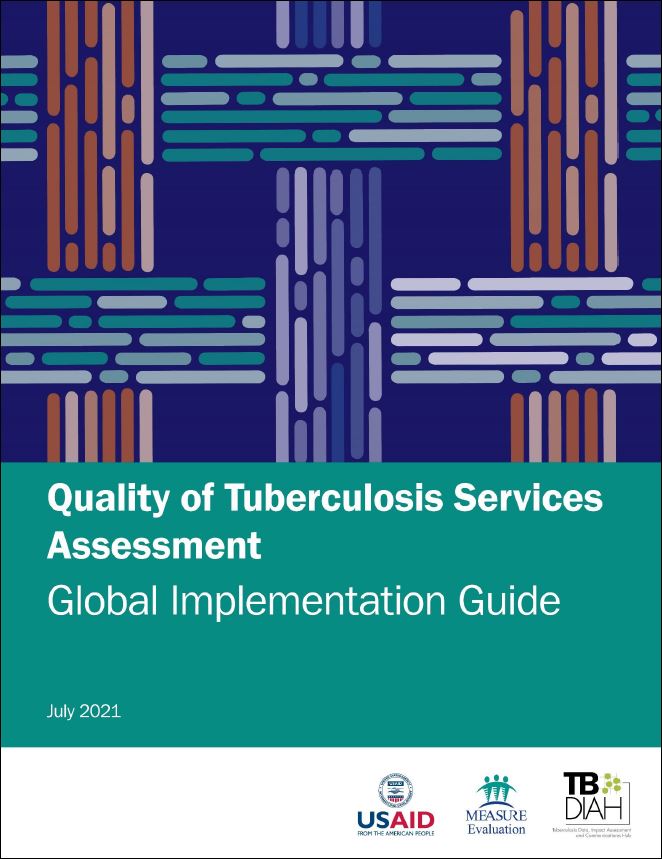Quality of Tuberculosis Services Assessment: Global Implementation Guide

Citation: TB DIAH and MEASURE Evaluation. (2021). Quality of Tuberculosis Services Assessment: Global Implementation Guide. Chapel Hill, NC, USA: TB DIAH, University of North Carolina.
Abstract: The Quality of Tuberculosis Services Assessment (QTSA) Global Toolkit consists of this Implementation Guide, the QTSA Global Tools, and supplemental COVID-19 modules. These materials are designed to be adapted to a specific country context for use by national tuberculosis programs (NTPs), donors, and other key stakeholders to assess the quality of tuberculosis (TB) diagnosis, treatment, and care services. The QTSA is a health facility assessment. It employs several data collection methods, including facility audits, extraction of TB data from facility-based registers and records, interviews with TB service providers and interviews with TB patients. The findings can assist policy makers, program managers, and service providers to develop action plans to improve and strengthen the quality of TB services.
This document presents detailed information about the process of implementing the QTSA, from initial planning to completing data analysis and reporting. The QTSA Implementation Guide is organized into four modules: (1) Rationale, Framework, and Overview of the QTSA, (2) Planning and Implementation, (3) Guidelines for Sampling, and (4) Data Analysis and Presentation of Results. Four appendices provide further information on editing the QTSA tools, key data collection phase documents, an analysis plan outline, and sample dummy tables for the QTSA findings.
Access additional QTSA resources at https://www.tbdiah.org/assessments/quality-of-tuberculosis-services-assessments/.
This document presents detailed information about the process of implementing the QTSA, from initial planning to completing data analysis and reporting. The QTSA Implementation Guide is organized into four modules: (1) Rationale, Framework, and Overview of the QTSA, (2) Planning and Implementation, (3) Guidelines for Sampling, and (4) Data Analysis and Presentation of Results. Four appendices provide further information on editing the QTSA tools, key data collection phase documents, an analysis plan outline, and sample dummy tables for the QTSA findings.
Access additional QTSA resources at https://www.tbdiah.org/assessments/quality-of-tuberculosis-services-assessments/.
Shortname: ms-21-200-tb
Author(s): TB DIAH, MEASURE Evaluation
Year: 2021
Language: English
Resource Type: Guidance and Tools
Source: TB DIAH
